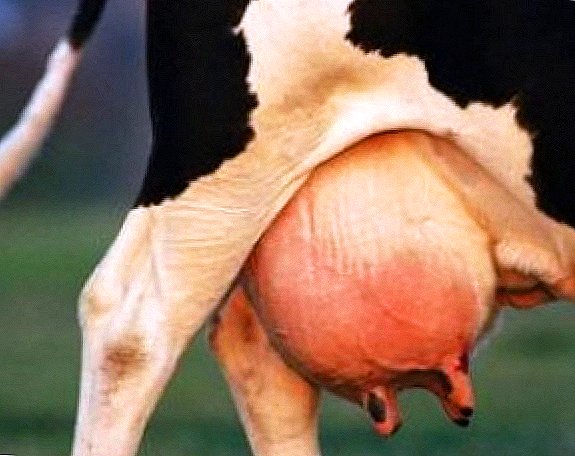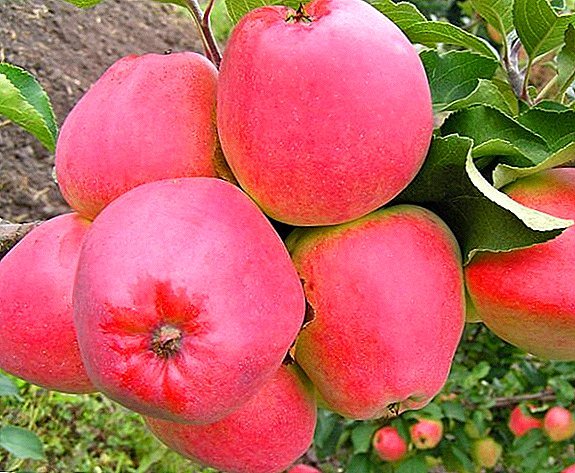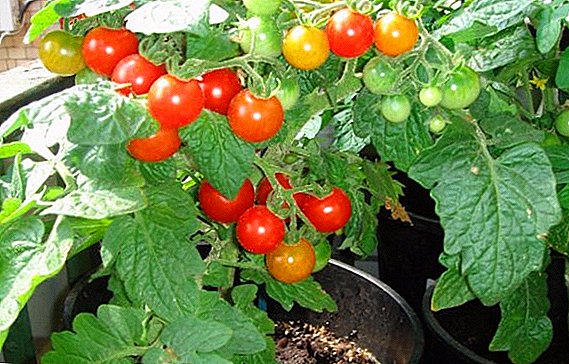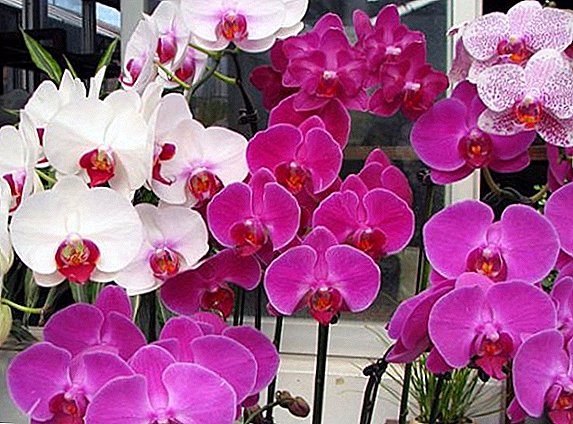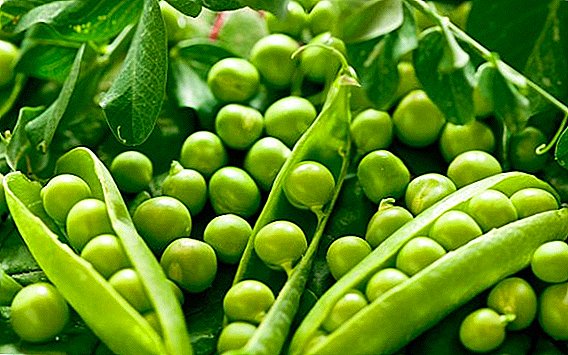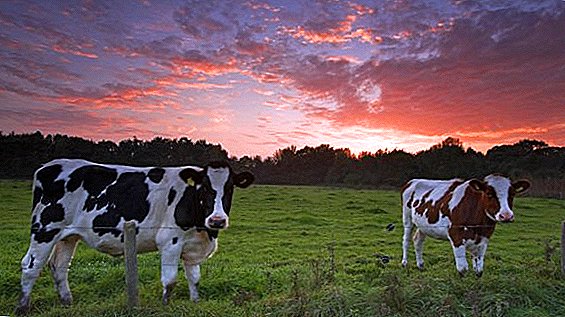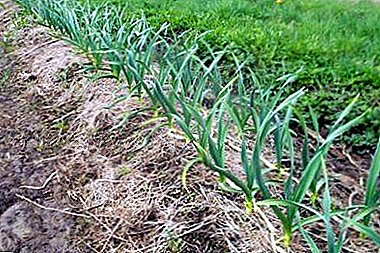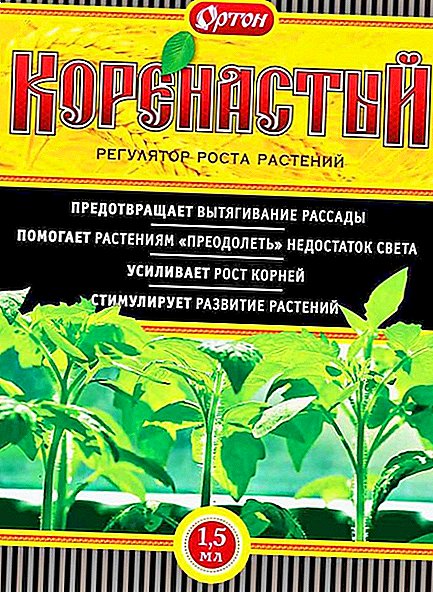 Plant growth regulators are especially popular with growers (both professionals and amateurs). These drugs activate the protective forces of the plants themselves, stimulate their root and fruit formation, enhance immunity and resistance to stress, etc.
Plant growth regulators are especially popular with growers (both professionals and amateurs). These drugs activate the protective forces of the plants themselves, stimulate their root and fruit formation, enhance immunity and resistance to stress, etc.
Every experienced gardener knows that the use of retardants-inhibitors rather than growth stimulators will more effectively affect the yield (increase it by 25-30%). Among them, it is worth noting the new drug "Chunky" manufactured by ORTON LLC.
Did you know? ORTON LLC (Pushkin) has been engaged in the development, production and sale of agrochemical products for fruit and vegetable crops in the Russian Federation, Ukraine, Kazakhstan, etc. for more than 20 years. The main areas are the production of growth regulators, plant stimulants (fruit formation, flowering, rooting etc.), fertilizers, plant protection products, etc. The products are of high quality (the process from development to implementation has several years of field tests and inspections in different geoclimatic conditions), ologichnostyu, novation development, increased use of safety level for humans.
Purpose of the plant growth regulator "Chunky"
 Growth regulator "Chunky" finds its application in the cultivation of vegetables, ornamental and flower crops.
Growth regulator "Chunky" finds its application in the cultivation of vegetables, ornamental and flower crops.
The drug effectively helps after two or three applications in solving such problems as:
- stretching vegetable and flower seedlings during early planting or under the influence of stress, as a result of which it gets poorly acclimated, the ovary crumbles, the yield decreases (in vegetable crops), decorative effect is lost, the number of cultivated flowers is reduced, etc .;
- poor rooting of saplings;
- reduced immunity.
Influencing plants seedlings, growth control "Chunky" fulfills its main purpose - modifies, forms a more optimal habit.
As a result, not only the condition and quality of seedlings is improved - the consequences are felt throughout the whole vegetative development of plants:
- resistance to diseases and adverse conditions (frosts, droughts) increases;
- earlier (by one or two weeks) flowering, ovary and fruiting garden crops;
- improvement of decorative effect, more saturated pigmentation, an increase in the flowering period of flower crops;
- reduction in yield losses up to 30%;
- prevention of indoor plants drawing during the winter, pigment fading (the color palette becomes more diverse).

Important! The effect of growth regulator is brief. The action of the “Chunky” agrochemical agent can be considered as doping for seedlings, which it receives at the right moment. The main condition for success is that the plant must be provided with the necessary care (it must be well nourished, irrigated, protected from diseases and pests, etc.). Only then this plant is ready under the influence of doping to its maximum realization - to bloom and bear fruit in the garden, in the garden or in a potted pot.
How does the drug on plants
The drug "Chunky" is a highly effective plant growth regulator. Active ingredient - Chlormequalide (water soluble concentrate). This drug has no natural analogues.
When processing them plants begins the following:
- chlormequat chloride inhibits the biosynthesis of natural plant growth stimulants;
- plant growth in length stops - the development of generative organs is activated (cells grow in the transverse direction);
- internodes shorten, stalks (shoots) increase strength and elasticity;
- photosynthesis productivity increases;
- the excessive consumption of water is limited;
- pigmentation becomes saturated and more intense;
- assimilates are redistributed — their excess (previously spent on growth) is concentrated in other organs: roots (roots become more developed), stems, flowers, and fruits (bulbs, tubers, heads, etc.).
 In other words, the energy of the earth and the sun does not go to the tops, but to form fruits and ultimately, to increase the yield.
In other words, the energy of the earth and the sun does not go to the tops, but to form fruits and ultimately, to increase the yield.Did you know? The word "retardant" (Latin retardo - to delay) refers to a synthetic growth regulator, with which you can act on phytohormones (or natural regulators) - auxins (stimulants of root formation), gibberellins (stem growth hormone), cytokinin (development of kidneys), ethylene ( fruit ripening). Growth regulator "Chunky" - a drug that can influence gibberellins.
The correct application of "Chunky" for plants (instruction)
Growth regulator "Chunky" - is a universal drug (it can be used for different plants), so the logical question arises as to how to apply it to a particular culture. The preparation is diluted in the required volume of water (it should be diluted in stages - first, the contents of the ampoule are mixed with two-thirds of the volume of water, another third is mixed and added).
 Regular packaging of the drug "Chunky" - 1.5 ml ampoules
Regular packaging of the drug "Chunky" - 1.5 ml ampoules
Plants are treated by spraying and watering.
The volume of water, the method of application, the number of treatments, the age and the growing season required for processing depend on the type of plant.
Processing (spraying) should be carried out in dry weather in the morning or in the evening (when the sun is no longer burning), in calm weather. Temperature range - from 15 to 25 degrees Celsius. In the next 3-5 days should refrain from watering the treated plants.
Important! Retardants dissolve in water. Such solutions cannot be stored (it adversely affects the activity of retardants), so they should be prepared immediately before use. When processing plants it is necessary to adhere to security measures - getting the solution on the open skin is undesirable.
As for the dosage, each package of the growth regulator "Chunky" ORTON LLC contains general instructions for the use of the drug.  It shows the approximate dosage and method of application for crops:
It shows the approximate dosage and method of application for crops:
- for seedlings of sweet pepper, tomatoes and eggplants - sprinkle three times (the first time after the appearance of 3-4 true leaves, the next two - with an interval of 5-8 days). One ampoule goes to 1500 ml of water (consumption will be 300 ml per ten square meters);
- for white cabbage seedlings - double spraying (the first - in the phase of 2-3 true leaves, the second - in a week). 1.5 ml of the drug is dissolved in 500 ml of water (consumption - 300 ml per ten square meters);
- for ornamental shrubs - double spraying (the first - in the phase of formed buds (without pigmentation), the second - in 5-8 days). 1.5 ml of the drug - per 1000 ml (consumption - 50-200 ml per bush);
- indoor plants in pots - a single watering (in the phase of formed buds (without pigmentation)). The contents of the ampoule must be dissolved in 150-300 ml of water. Water at the rate of 50 ml per plant.
Important! Growth regulator "Chunky" mobilizes the strength of the plant, putting gibberellins to sleep for a while and activating other phytohormones (the instruction will tell you what to do). To obtain the desired effect, it is necessary to strictly adhere to the recommended doses of the drug, the consumption rates, the amounts of the recommended treatments. The reduction will not lead to the desired result, the excess may cause the opposite effect.You should not get carried away and often apply such stimulants for plants. This will ultimately have a negative effect on the plant that has been subjected to constant doping.

Advantages and disadvantages of using growth inhibitor
The ratio of the advantages and disadvantages of the use of growth inhibitor "Chunky" in the cultivation of garden and indoor plants is clearly in favor of the first.
Growth stimulator "Chunky" increases the viability of plants, increases their resistance to water shortages, excess salt, temperature fluctuations, diseases, contributes to a more economical use of moisture from the soil. The quality of seedlings improves, fertility and decorativeness increase. The drug is readily available.
The use of a growth regulator allows you to temporarily suspend the development of seedlings (in the case of some natural disasters or force majeure situations) without any harm to plants.
The growth accelerator "Chunky" is safe for humans, is included in the register of approved drugs - it does not accumulate in plants (it belongs to the third class of danger).
As for the drawbacks, it is possible to indicate only the instability of the action inherent in all such preparations (due to climatic features, dependence on weather conditions, soil conditions, varietal qualities of the plants being treated, etc.). There are certain difficulties in determining the correct doses. 
In due course, probably, any minuses will be revealed, but today this preparation is one of the most reliable, safe and effective.


